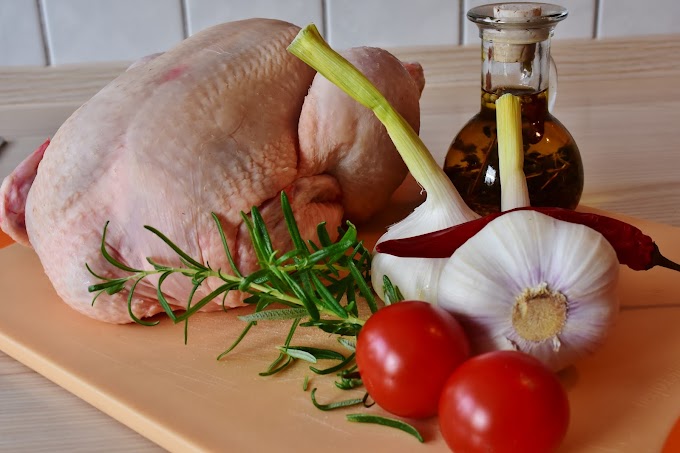Champagne And Sparkling Wine
"in victory, you deserve Champagne, in defeat, you need it"
-Napoleon Bonaparte
Hello readers! I have explained about alcoholic beverages, non-alcoholic beverages, cocktail & mocktail, wines in depth on my previous article. In today's article I am going to share you Champagne knowledge.
Champagne is a type of sparkling wine, which has derived from the Champagne region in France. Only sparkling wine made in this region is legally allowed to be called Champagne. Champagne region lies in northern region of France, near to the Paris.
The most common story on its origin is that a monk with the name of Pérignon introduced bubbles into the wine by mistake. However, he then went on to clarify and improve the drink dramatically and it came to be liked by French aristocracy, who then popularized it. Champagne is used to toasts at engagements, birthdays and weddings. You must have seen race drivers shake up a bottle of champagne and put it among their buddies when they win. champagne symbolise lavish lifestyle.
In fact, only if the wine is from this Champagne region, it can be called as Champagne. If it is manufactured anywhere else in the world, it is known as sparkling wine. Champagne has a very distinct taste and texture that you only get from Champagne region. Every single grape they need to make their champagne is bought from this champagne area throughout the world. Thee manufacturers buy them from the thousands of smaller independent grape growers who own vineyards in Champagne.
France holds strict rules on the way that champagne is to be made. There's a whole raft of regulations about how champagne must be made, but two of the most important ones are;
- The second fermentation (that's what produces the gas that makes the bubbles) must be done inside the bottle itself.
- The minimum time that the champagne must be aged in the cellars before being sold.
The primary grapes that are used in champagne are Chardonnay, Pinot Noir and Pinot Meunier. Most Champagne wines are a blend of all three or individual ones. (A white grape - Chardonnay and two black grapes - Pinot Noir and Pinot Meunier). If you know these three name it will cover 99% of all champagne that is made and If you're thinking how you can make white champagne from black grapes don't forget that when the grape is pressed, the juice is always colourless, even if the grape skin is black.
To make true Champagne, a special process known as 'méthod champenoise' is used which is the traditional French method for creating bubbles in the wine. Even if this process is used in other parts of the world, their product should still be referred to as sparkling wine rather than champagne if grapes from champagne vineyards are not used. There's not much difference between sparkling wine and champagne because all champagne is sparkling wine but all sparkling wine is not champagne.
There are Six different types of champagne and they are Brut, Extra Dry, Sec Champagne, Demi-Sec, doux champagne & rose champagne.
Brut is the driest of all the champagnes and is never sweetened. Top brands such as Moet & Chandon and Bollinger all have their own varieties of Brut champagne. Extra Dry champagne is the next one up on the scale of sweetness. This type of champagne is slightly sweeter than Brut and therefore not as dry. Sec champagne is classified as slightly sweet champagne and is made using grapes from different vines. Demi-Sec is slightly sweeter than Sec and the sweetest champagne available is known as Doux champagne. This Doux champagne is not as popular and therefore may be harder to find.
Remember "Brut" is the driest of champagnes with almost no residual sugars. Extra Brut, Brut, Extra Dry and Dry are the four different levels of dryness you can get and these "Dry" champagne are sweeter. Don't get confused with it.
In more recent years, the popularity of rosé champagne has significantly increased due to its sweet and fruity taste. Rosé champagne is made using grapes from pinot noir or chardonnay grapes. Some champagne producers will simply add a touch of pinot noir to the champagne in order to give it the taste required.
Champagne should be served in Champagne flutes. A flute is a slim glass which tapers slightly inwards towards the top. This helps in containing/holding the bubbles for a longer period of time and hence, allows you to enjoy your Champagne to the fullest. If you don't use taller and narrow glass then the trapped air bubble will be released soon and may affect the flavour.
Champagne is usually stored at 55 degree Fahrenheit in a dark damp location. You must chill the Champagne for a few hours to bring the temperature down to 45 degree Fahrenheit before serving. The best way to chill champagne is not in the freezer, but rather in the refrigerator for couple of days. You should never allow the temperature to rise above 75 degrees at all costs or else taste and flavours will be affected. Champagne should also not be refrigerated more than two or three days before it is intended to be used.
Champagne goes well with cheese. Brut champagne goes extremely well with any type of cheese. Try some aged and hardened cheeses like parmesan or cheddar. If you're having blanc de blanc champagne, it's recommended that you try it out with some goat cheese. Champagne also goes well with Risotto or pasta. Any type of mushroom meal will go exceptionally well with brut champagne.
Other exceptional combinations are champagne with french fries, fried chicken and pizza. The mixture of seafood and champagne is rapidly becoming well-liked. Finally, meat also goes extremely well with champagne. Poultry and game birds especially go well with roses, but so do white meats like ham, veal, lamb or pork. Desserts which are not extremely sweet, like tarts, pound cake, cherries, or any desserts that consist of lemon, are the ideal mixture for demi-sec champagne while Chocolate could be consumed with extra-dry or demi-sec.
How to serve champagne?
- First, wipe off the bottle of champagne with a clean towel until it is clean and stain free.
- Place the un-opened bottle in a wine bucket, full of ice.
- Present the clean bottle to the customer by holding it on a clean, folded napkin. The label should always face the customer.
- Remove the foil to a level below the wire loop. Twist the wire loop until it is loose enough to remove.
- As soon as the wire loop is removed, you should place your thumb over the cork
- Immediately place a clean towel over the cork of the bottle. Keep your thumb or hand over the cork to keep it from flying out.
- Place your hand over the towel and grasp the cork firmly. Hold the bottle at a forty five degree angle away from yourself and the customer, and twist the bottle to remove the cork.
- Pour the champagne gently into the glass. You may either tilt the glass or let it sit upright. Pour until the head reaches the rim of the glass.
- Let the champagne settle once. Then pour the champagne until the head reaches the rim again. The champagne should settle to within a half inch from the top of the champagne flute.
- The champagne is then served from the right-hand side of the customer, similar to wine. The bottle is to be placed in a metal container half full of ice to keep the champagne chilled while it is waiting to be poured.
Or, if you are confused, just present the label of champagne to the host, if he confirms, move aside to the side station/dummy waiter and open the champagne bottle, move to the guest table and serve from the right hand side of the guests.
The percentage of alcohol in champagne is approximately 12.2%. Some of the most popular champagne brands include Moet & Chandon, Bollinger, pommery, Taittinger, krug, Landon, Ruinart, Dom perignon, Leroux-Mineu e.t.c. There were over 400 million bottles of Champagne exported in 2021 and this is rising continuously. However, The most expensive champagne is Heidsieck. The 1907 Heidsieck sold for about $ 275,000 a bottle, making it by far the most expensive champagne in the world. I am going to tell you about the story of Heidsieck ,the most expensive champagne ever sold in my next article.




























0 Comments
If you have any doubts , please let me know